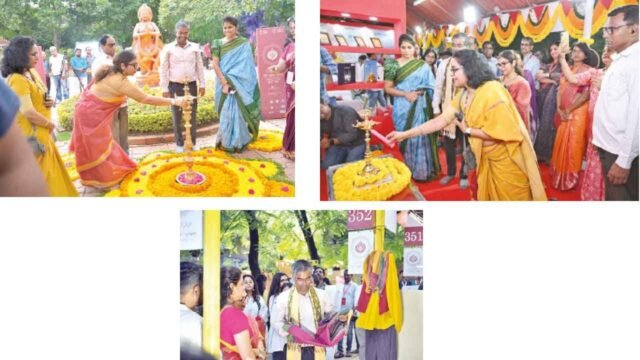Hyderabad: India’s rich tapestry of handlooms and crafts took center stage at the CHHAAP-2025 with the unveiling of “Sampadā”, a fashion showcase that celebrates the nation’s textile heritage through a contemporary lens.
The event, a collaborative initiative by the Ministry of Textiles, the National Institute of Fashion Technology (NIFT), and leading Indian designers, drew global attention to the enduring beauty and cultural depth of India’s handcrafted traditions.
“Sampadā,” meaning wealth and heritage, is more than a title—it’s a tribute to the generations of artisans whose intricate weaves and motifs have shaped India’s identity. The showcase presented a curated collection of garments across three genres: Traditional Indian, Fusion, and Western wear. Each silhouette reflected a seamless blend of age-old craftsmanship and modern design sensibilities, reaffirming the relevance of indigenous textiles in today’s fashion landscape.
India’s handwoven fabrics are deeply rooted in its pastoral and urban rhythms, echoing the values, beliefs, and aesthetics of diverse communities. From the vibrant threads of Banarasi silk to the earthy textures of Khadi, every piece in Sampadā told a story of resilience, artistry, and cultural pride.
NIFT’s Craft Cluster Initiative played a pivotal role in shaping the showcase. This program connects fashion students with local artisans, fostering mutual learning and innovation. By channeling student creativity into market-ready designs, the initiative not only empowers rural craftspeople but also ensures the sustainability of traditional practices in a rapidly evolving industry.
Speaking at the event, organizers emphasized the importance of preserving India’s textile wealth while adapting it to global fashion narratives.
“Sampadā is a celebration of continuity—of knowledge passed down, of traditions upheld, and of a future shaped by heritage,” said a senior official from the Ministry of Textiles. The showcase resonated with international audiences, highlighting India’s commitment to cultural preservation and sustainable fashion.
As global markets increasingly seek authenticity and craftsmanship, Sampadā positioned India as a leader in heritage-driven innovation.
With its evocative presentation and collaborative spirit, Sampadā reaffirmed that India’s textile legacy is not just a relic of the past but a vibrant force shaping the future of fashion.







